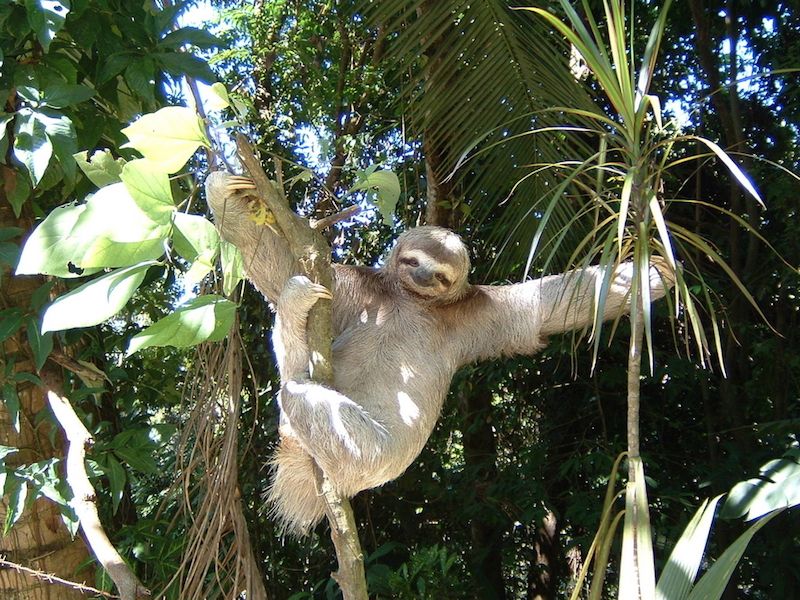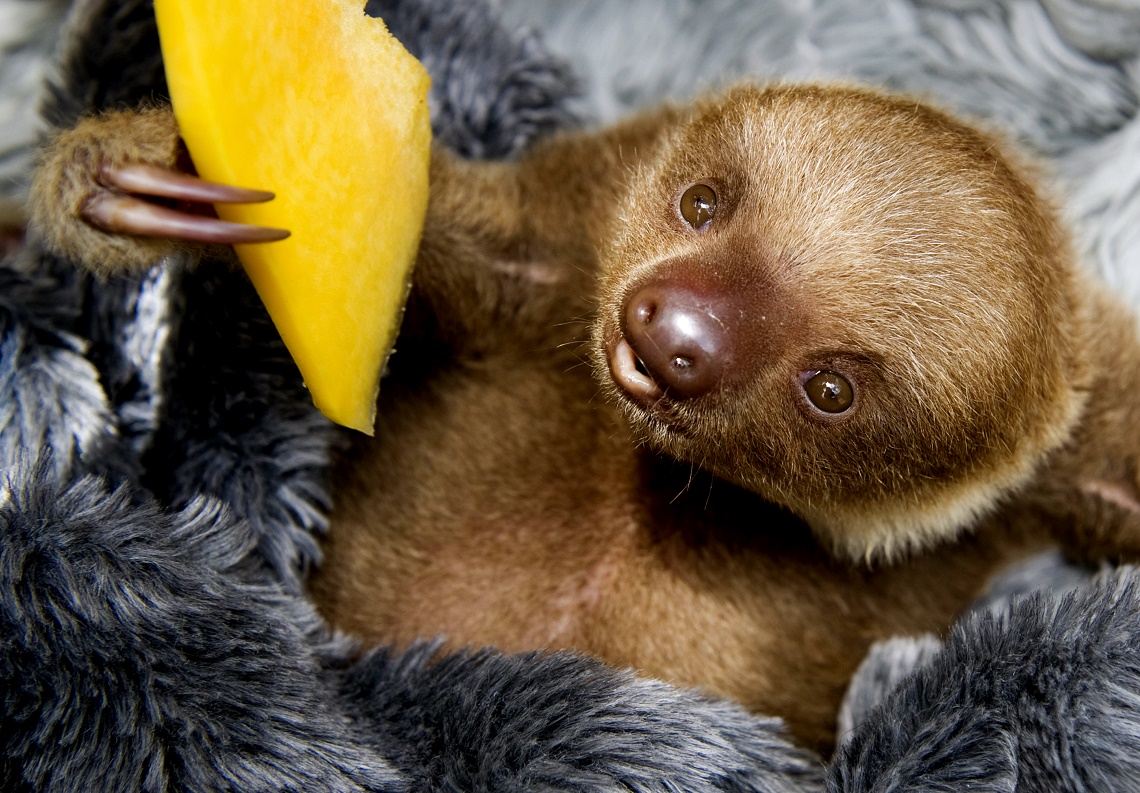A Sloths Lifestyle
Posted : admin On 3/28/2022By Sara Butler
The lifestyle of the Sloth has so many lessons for human survival in the 21st century. If we continue to promote the dominant paradigm of infinite growth with our 'faster, bigger, stronger' behavior; the economic system pushing mass-production, mass-consumption and a scientific, reductionist view of nature it is clear that we will. Sloths have been on this planet for more than 40 million years. What's the secret to their success? In a hilarious talk, zoologist Lucy Cooke takes us inside the strange life of the world's slowest mammal and shows what we can learn from their ingenious adaptations.
Image Source: National Graphic
- A Sloths Life People seem to think its easy to live the sloth lifestyle, but it's hard to lie around all day ️ Hit the link below to see our sloth tops & hoodies 👕 bit.ly/aslothslife.
- Life cycle of a sloth - SlOTH'S sloths have a gestation of 10-12 months. They typically have one baby at a time, and the baby will cling to its mother for about 6 months, but stays near its mother for about 1 year. Sloths live for about 20 years, but in captivity they can live into their thirties.
- Sloths live only in the warm, tropical regions of Central and South America: in Brazil, Honduras, Paraguay, Uruguay, Panama, in northern Argentina. As habitats, they always choose dense forests where they feel comfortable among tree crowns.
Sloths are everywhere. These lovable creatures with a permanent smile and a laid back attitude are a hot ticket these days. My tweens are obsessed with sloths. Maybe it’s an excuse not to clean their rooms, but it probably has more to do with how cute sloths are.
This got me thinking: What can you learn from an animal that only climbs down from a tree once a week to go to the bathroom? An animal that moves so slowly, it grows actual moss (OK, algae) on its fur? Turns out, there are quite a few things you can learn about health and wellness from the sloth. So channel your inner sloth and relax as you learn some healthy lessons from this odd creature.
Lesson No. 1: Always Have a Snack on Hand
The algae that grows in the fur of a sloth? It does more than just add some green highlights. Studies have found that the algae actually gets eaten by the sloth. That takes snacking on the go (or, in a sloth’s case, the no-go) to a new level. But when you move so slowly, it can be hard to get all the nutrients your body needs.
Humans seem to have the opposite problem. Many of us are on the go so much that we often end up reaching for convenience foods instead of foods that supply the nutrients we need for good health. You can channel your inner sloth by taking healthy snacks with you wherever you go. Whether it’s a road trip or just a day at work, taking along some whole-grain crackers and nut butter or hummus isn’t too much to ask. And probably tastes a lot better than algae.
Lesson No. 2: Slow Your Roll
When was the last time you stopped to smell the roses? People are so busy that many rush through daily life without stopping to take it in. Mindfulness has become a bit of a trend these days, but that doesn’t mean it’s not worth giving a try. In fact, it’s something you should strive to incorporate into your life.
Sloths have no issues with living life in the slow lane -- they’re not all Flash from Zootopia, after all. Did you know they rarely move more than 320 feet in a single day? You don’t need to go that slow, and your chiropractor wants you to move your body every day for good health, but it’s a nice reminder that if you don’t stop and look around every once in a while, some really great moments are going to pass you by. Don’t live your life on autopilot.
Lesson No. 3: Always Strive to Get Enough Sleep

You may think that a sloth spends most of its day asleep, but the truth is they only sleep about nine hours per day. But they make sure to get that nine hours no matter where they are or what predators are lurking about. That’s a great life lesson for everyone because every person needs proper rest on the regular to be at their very best.
If you’re terrible at putting yourself to bed or are a night owl that only manages about six hours of sleep per night, then you need to make some changes. Create a nighttime routine, turn all screens off at least an hour before bed, and try not to eat a big meal before going to sleep. If you are still having trouble, then just remember the humble sloth who, even when faced with the stress of predators that want them as a midnight snack, manage to get a full night’s rest.
Sloths are more than just cute animals that hang around in a tree all day, they’re also healthy living gurus -- if you can slow down enough to notice.

The information, including but not limited to, text, graphics, images and other material contained on this page are for informational purposes only. The purpose of this post is to promote broad consumer understanding and knowledge of various health topics, including but not limited to the benefits of chiropractic care, exercise and nutrition. It is not intended to provide or be a substitute for professional medical advice, diagnosis or treatment. Always seek the advice of your chiropractor, physician or other qualified health care provider with any questions you may have regarding a medical condition or treatment and before undertaking a new health care regimen, and never disregard professional medical advice or delay in seeking it because of something you have read on this page.

Sloths
Sloths are found in the tall trees of the tropical rain forests and cloud forests of Central and South America. They spend the majority of their time in trees, even sleeping curled up in the crook of a tree. The only time they venture down from the trees is to relieve themselves or to swim. An enclosure for sloths in captivity should emphasis vertical space more than floor space, with ample trees and branches for climbing.
Sloth Diet
Although sloths have four-part stomachs to help them digest the tough leaves that make up the bulk of their diet, they are slow digesters. It can sometimes take up to one month for the animal to fully digest one meal. The leafy diet that the sloth eats is relatively low in nutritional value so the animal doesn't derive much energy from their food, which may be why the animal moves so slowly.
Sloth Enrichment
A sloths life revolves around eating and sleeping. In captivity, sloths will sleep 15 to 20 hours per day, which leaves little time for enrichment activities. In the wild, the animals sleep less. They are not very social animals and prefer solitude. Aside from climbing, the only activity they engage in is swimming, so sloths in captivity would benefit from pool time.

Breeding Sloths
Sloth courtship starts when a female screams a mating call to let any male in the area know that she is available for mating. Mating and birth both take place in the trees. Sloths give birth to just one baby at a time, after a gestational period of between six months and eleven months, depending on the species. The babies stay with their mother for up to four years and ride around clinging to their mother's belly for weeks after birth.
The Sloth Life Dream On
Sloths are split into 2 types, the two-toed and the three-toed sloth. The two-toed has 2 species which are called Linnaeus's two-toed sloth and the Hoffmann's two-toed sloth. The three-toed has 4 different species which are called the Brown-throated sloth, Pale-throated sloth, Pygmy three-toed sloth and the Maned sloth.
A sloth is a mammal that weighs from 7 to 19 pounds and found in the rainforest of Central and South America. Their length is from 18 to 34 inches. A sloth has long coarse hair and moves very slow. Due to their slow movement, they will have algae growing on their fur. The algae will tint their, grayish brown, coat green. They hang from tree branches by their long hooked claws. Some species are only active at night while others are active day or night. Sloths have a very slow metabolism and the lowest mammal body temperature. Because of this, they do not need to eat a lot. Their diet includes leaves, fruit, tree buds and young twigs. Also to help reserve energy, they will sleep about 18 hours a day. They will sleep hanging upside-down from a branch. Also the sloth has the lowest muscle to mass ratios of all mammals therefore they are unable to shiver to keep warm. The sloth will descend from the trees about once a week to defecate and urinate. They will dig a hole first and then will fill it back in when done. When on the ground the can be very clumsy but are great swimmers.
Sloth Life Cycle Facts
A sloth can live up to 30 years and only the two-toed sloths do well in captivity. The three-toed sloth does not.